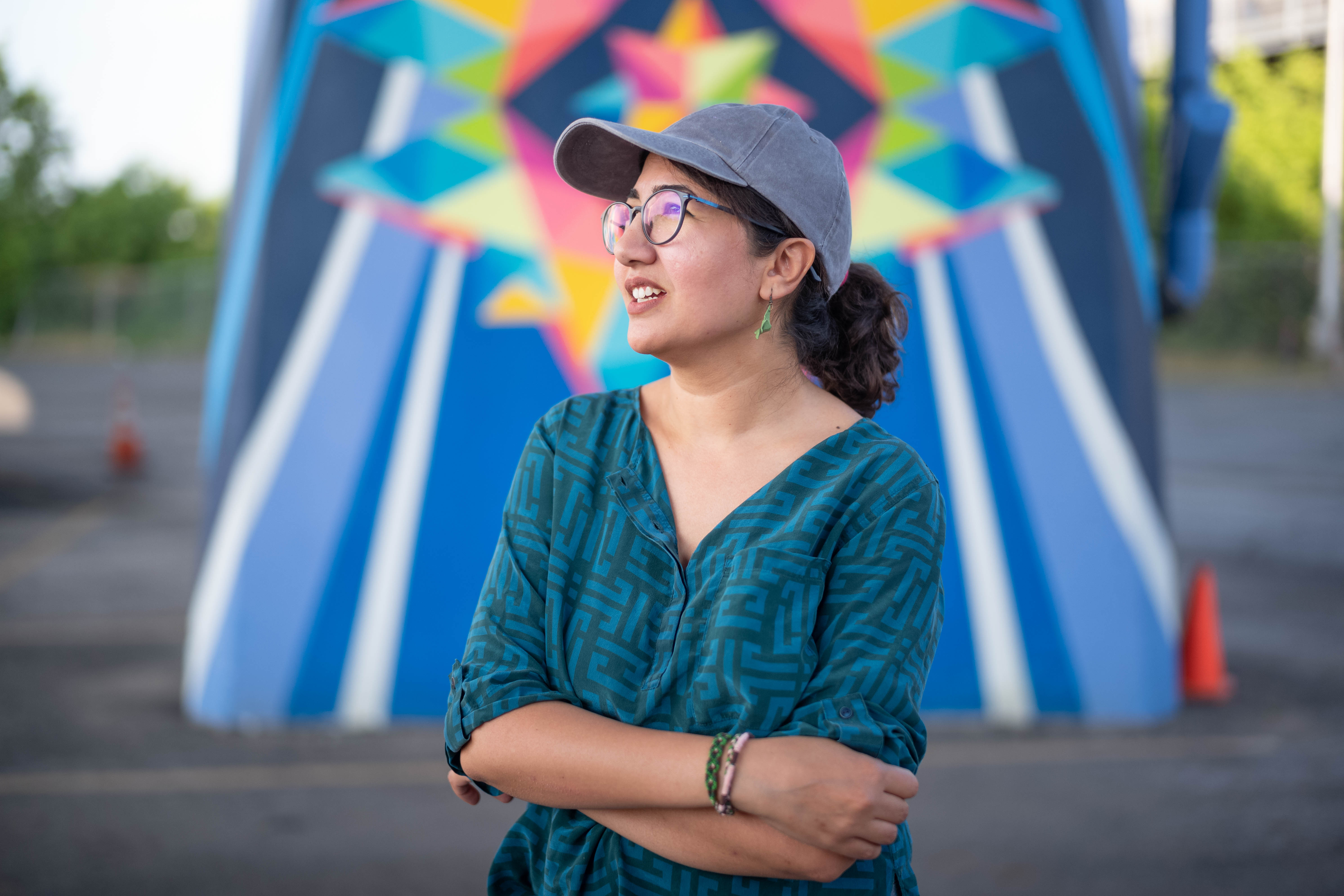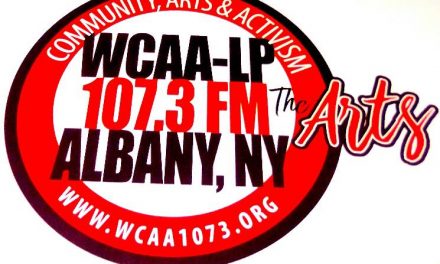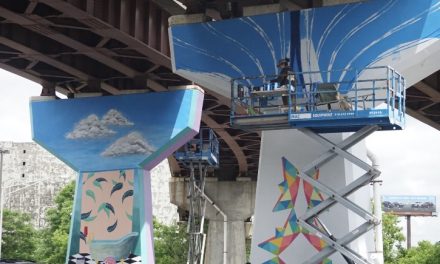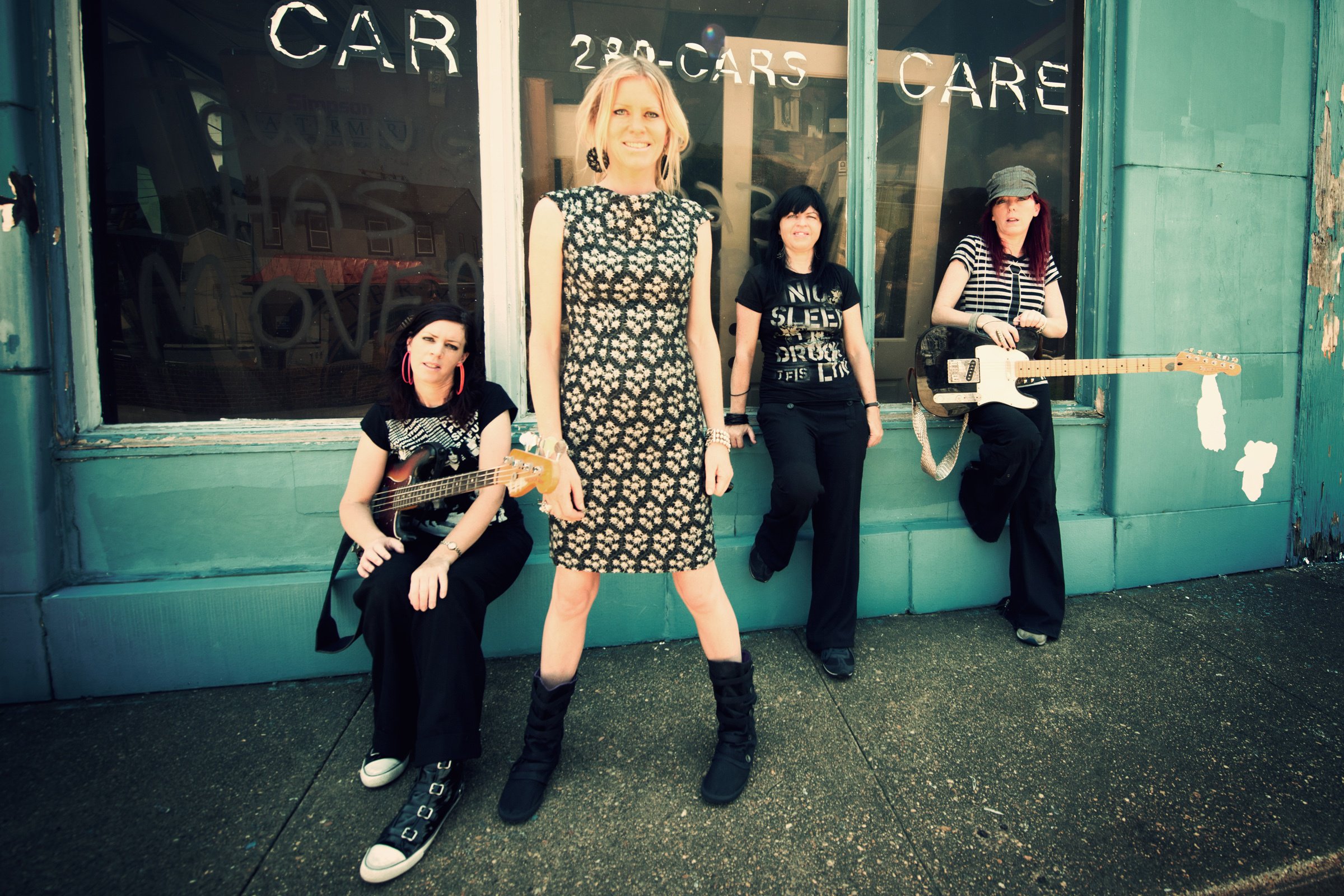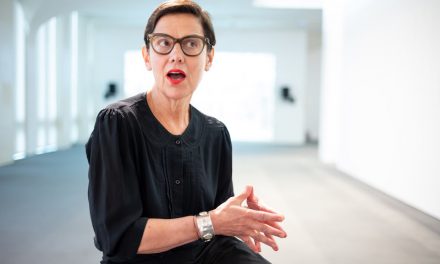Photos of Arzu Fallahi by Richard Lovrich. Photos of the work in progress by Tony Iadicicco. Mural map by Cara Hanley.
It appears as a shot of coruscating colors, geometric shapes and smooth patterns, Arzu Fallahi’s mural “Journey” on the concrete bridge support under 787 in the Albany Pump Station Parking lot is like an oasis in a desert, a flowering vine climbing up the side of a dead tree.
With a bit more inspection, a walk around the pillar it is painted on, the mural gives up a few more of its secrets, paper boats floating upward on some unrevealed quest. I stand under the mural with the artist who has reluctantly agreed to meet and discuss her art.
“This piece is called ‘Journey.’ It is about immigrants. I wanted to show the positive side of immigration as a whole journey because I feel like the image we get is very negative that doesn’t paint the whole picture for me. There is hope, there are dreams, there is some beauty there and I wanted to communicate that here,” Fallahi says. “I’m never ready to talk about these things. That’s why I make art, so I don’t have to talk about it. But as hard as it is to talk about it, it’s also necessary.”
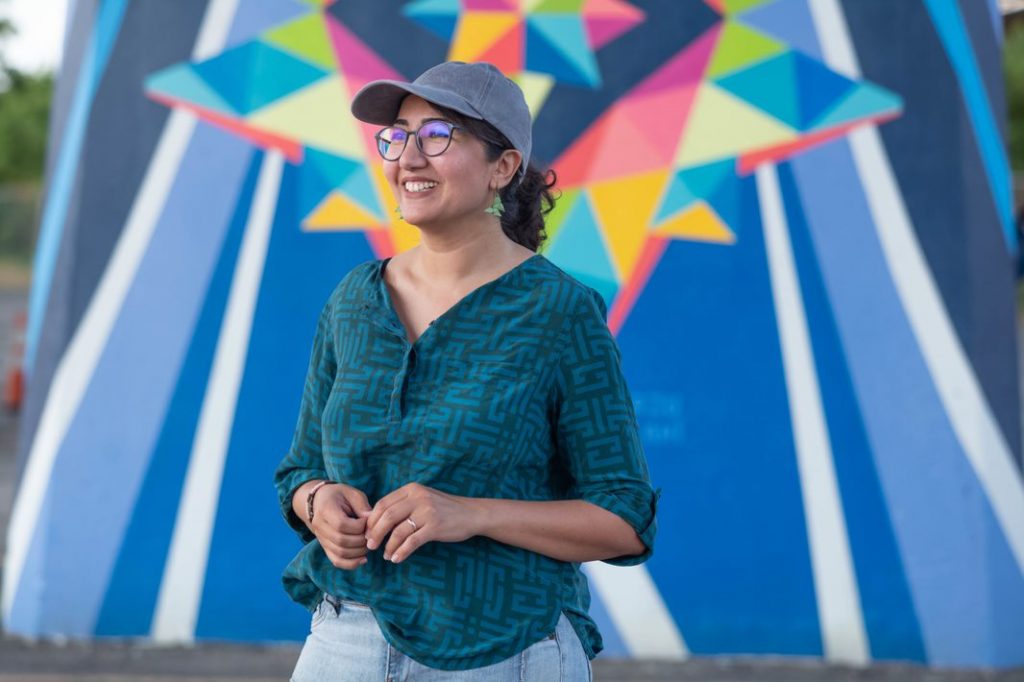
“Journey” was inspired by President Donald Trump’s travel ban levied against seven countries and Fallahi expected to paint it last summer, but various details lead to the work being rescheduled to this June. Fallahi started it on June 17 and finished it in two weeks.
“Maybe waiting one year was good as it is all progressing, it isn’t not getting any better. It’s pretty devastating. I wanted to add something more positive and beautiful. There is beauty in this human journey. It’s always there, people always move around, and they get better lives for their children, it’s not an alien thing.”
Fallahi herself is an immigrant. Growing up in Isfehan, Iran, Fallahi was inspired by the city’s history and architecture but as an expressive woman and someone curious about other cultures she couldn’t see her future there. She left in 2000 for Canada where she became a citizen and pursued a career as an animator and illustrator. In 2012 she got a job offer from local video game company Vicarious Visions and moved to the US after they helped her secure a green card. She’s worked in the video game industry for years, lending her artistic visions to some of the most-celebrated properties.
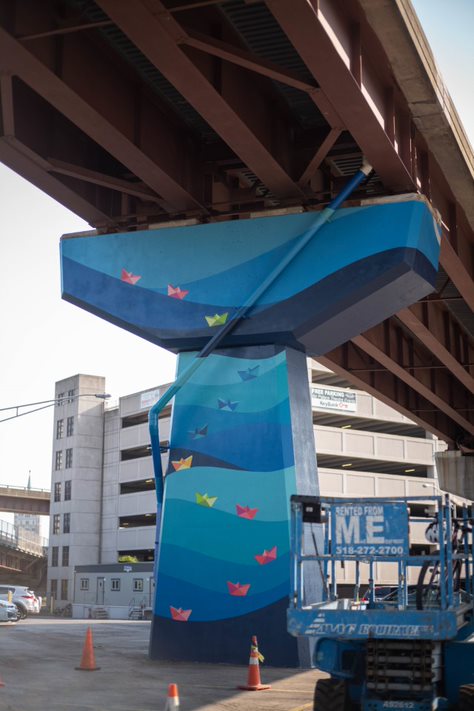
Painting the mural became a bit of a family event. Her husband and daughter came to visit periodically and supported the time she had to give to the project.
“My daughter freaked out a little. She was completely pumped and inspired me to do this and then realized, ‘I won’t see mom much for a couple of weeks,’ but she came to visit me and got bored and hot and didn’t want to stay here,” Fallahi laughs.
The mural was commissioned as part of Capital Walls, which is funded by Park Albany and overseen by a partnership between Albany Center Gallery and The Albany Barn. So far the initiative has funded the creation of 11 murals across Albany by local and internationally renowned artists.
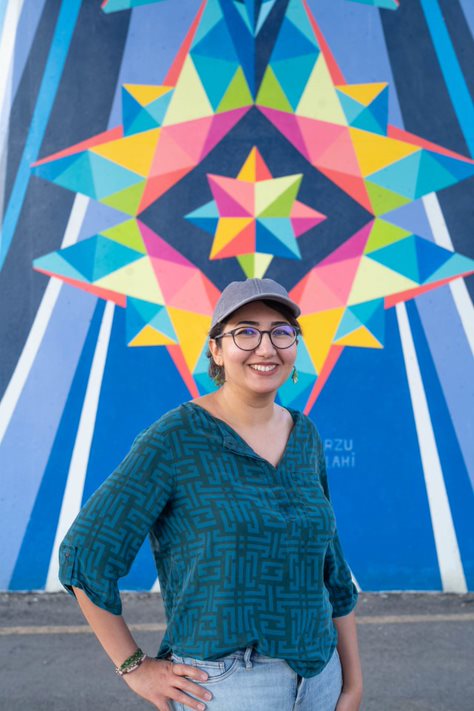
Tranforming Albany With Art
Studies have shown public art projects have a positive impact on disadvantaged neighborhoods and their residents, increase the livability of a city, attract investment, tourism and increase public identity and pride and, according to some neuroscientists, have a positive impact on mental health.
ACG Executive Director Tony Iadiccico says that street art is no longer taboo and is instead something people seek out. That has led to greater support for public art projects not only in Albany but across the country.
“What we’re doing isn’t anything new for the area but we’re doing it in a time when there is support for it. We’re working with the Parking Authority, The Albany Barn, we’re not doing it by ourselves. We have Discover Albany, the downtown BID, the Albany mayor’s office, Capitalize Albany. Everyone is coming together and saying ‘We support this vision.’”
Iadiccico credits a rise in interest in the creative economy as a general want to “invest in a place to live not just to work” in mounting support.
However, he notes that murals are expensive and at around $10,000 each, they require a number of financial backers. “We don’t want artists to work for free, so hopefully with more support in funding, more opportunities will open up.”
Beyond Albany
Kristen Holler of Albany Barn says the Albany Parking authority’s interest in community building and space-making birthed a natural collaboration with ACG and The Barn, with The Barn providing the “unsexy” aspects like insurance and legal advice.
“The program has now taken on a life of its own,” Holler says. “We’re now looking at how we expand beyond Parking Authority properties. We’re looking at becoming a more regional entity.”
“We have walking tours and bike tours thanks to CDHP Bike and the CDTA. We’ll have a youth tour later this month with artists working with kids on creating mini murals. We’re not just looking at putting art in public spaces but doing it in a way that lets people actually engage with it,” she continues.
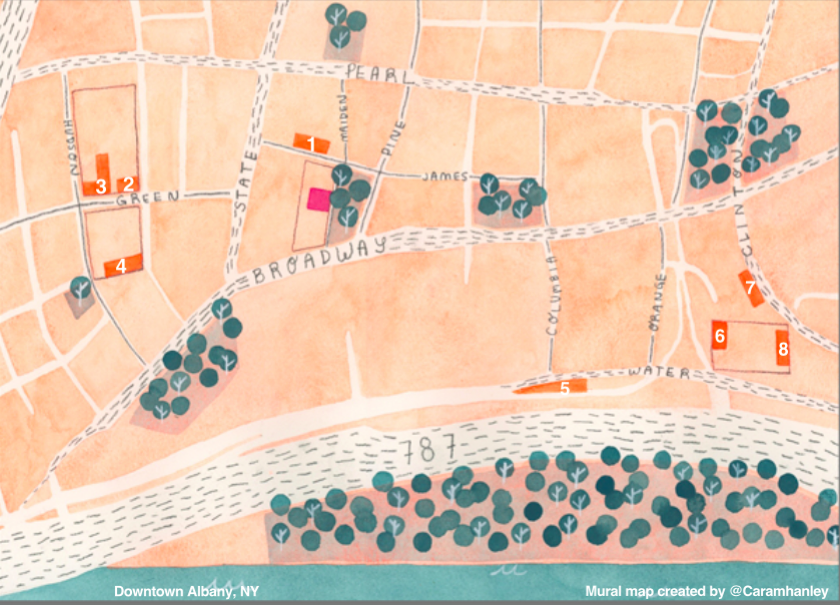
Providing Opportunity
Iadiccico assisted Fallahi during the two-week span—occasionally, when the heat became unbearable, venturing to the Pump Station or The Olde English Pub for a hard cider. Iadiccico plays the role of assistant to all of the artists of the Capital Walls project—running for coffee, cleaning up messes. He also provides technical advice when needed.

“I can guide them but they are super talented and that’s why we have them,” Iadiccico says of all the Capital Walls artists. “In Arzu’s case, this was her first mural and I gave her a little guidance and now she’s ready to do more. Sometimes all you need is support or a push, or someone to believe.”
“I don’t have a standard way of doing stuff in arts or business but I learned and I was supported,” he says. “If you give someone a little trust and understanding they can do it and they can flourish. That’s the important part: letting the artists do what they’re good at.”
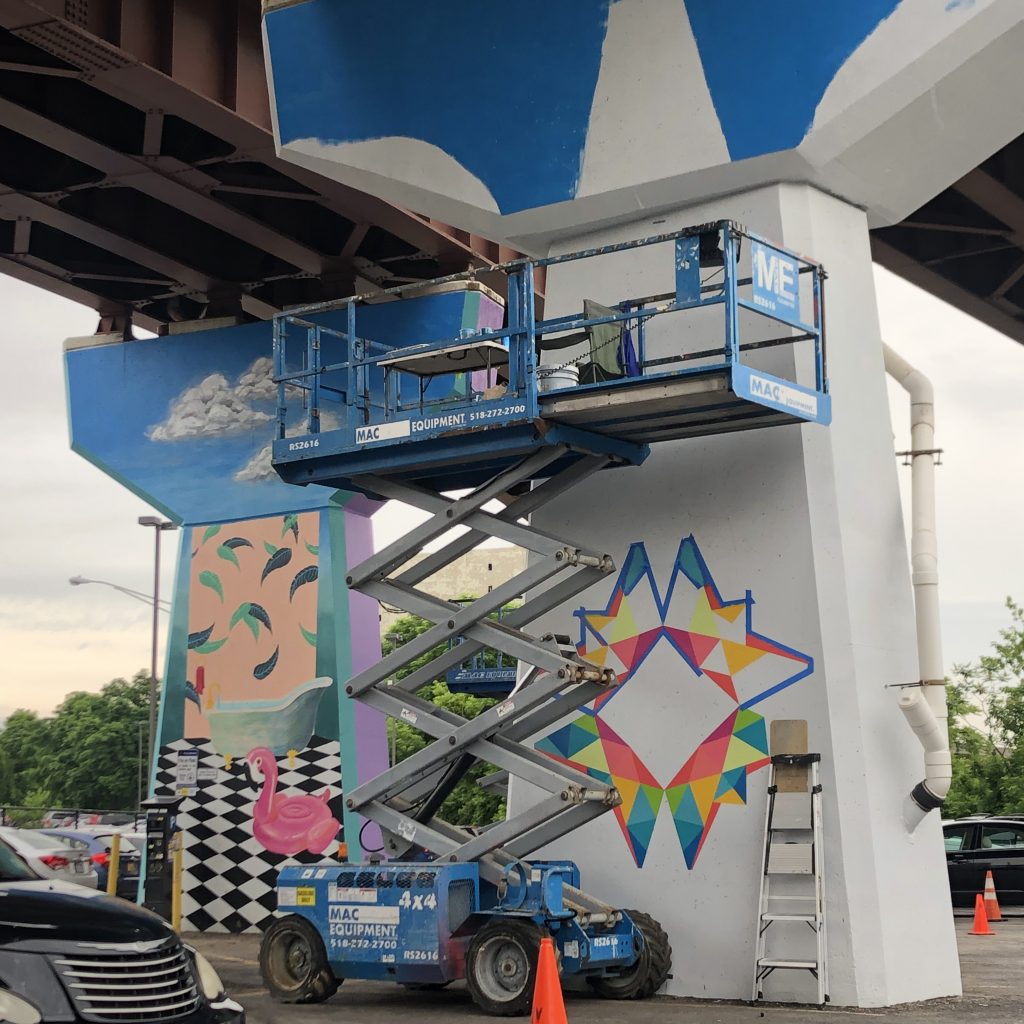
On to The Next One
Fallahi says she’s ready to do her next mural—and so is her daughter, who was inspired by seeing her mom at work.
“I appreciate Tony so much. He’s such a positive person and he wants to move the city in a very good direction, to make it more lively, more friendly. His plans make me really excited and want to stay here and live here and make it happen,” Fallahi says.
I ask Fallahi if there’s a particular spot in the area she’d like to paint a mural. She smiles, eyes wide. “There are so many canvasses left unpainted. I would love to paint somewhere everyone can see it. It can make a place so much more lively. I think it’s needed for sure.”

